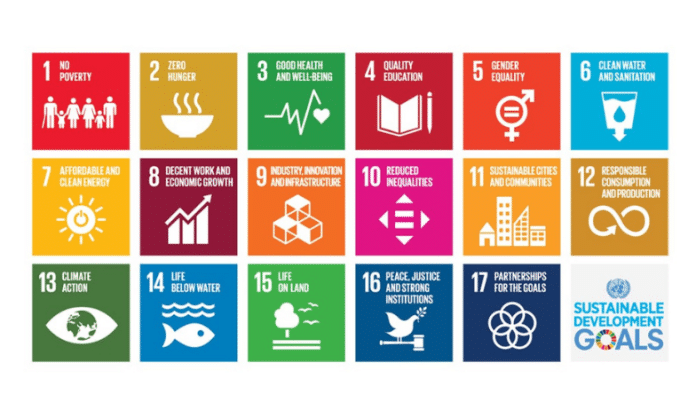The Sustainable Development Goals (SDGs) remain a “compass” to guide the European Union through crises, says European Commissioner for Economy Paolo Gentiloni, as Eurostat’s 2022 assessment reveals the EU has made progress towards most of the SDGs.
“Over the past few years, we have lived through two extraordinary crises, two black swan moments which have impacted our social and geopolitical family. Overcoming these crises demands a determination not to return to business as usual, but to transform the EU’s economic model and overall resilience. In this, the UN’s SDGs remain our compass,” said Paolo Gentiloni at a launch event for the sixth edition of Eurostat’s report, which monitors the EU’s progress on the SDGs.
The greatest progress was made towards ‘Peace, justice and strong institutions’ (SDG 16), with life in the EU becoming safer and government expenditure on law courts increasing.
There were however negative developments for ‘Life on land’ (SDG 15), with ecosystems and biodiversity remaining under pressure from human activities.
The impact of the Russian invasion of Ukraine and the full impact of the COVID-19 pandemic were not yet reflected in the report.
Moderate progress towards Climate action
Progress towards ‘Climate action’ (SDG 13) showed a mixed picture in the areas of climate mitigation, adaptation and finance. Provisional estimates for 2020 show the EU has already reduced its net greenhouse gas emissions by about 31% since 1990, but further progress will be required to meet the 55% reduction target for 2030. Monetary losses from weather and climate related disasters have continued to rise in recent years.
There was a negative assessment for ‘Life on land’ (SDG 15). While both the EU’s forest area and terrestrial protected areas have increased slightly, pressures on biodiversity from land take continued to intensify. Habitat loss is one of the reasons for the long-term decline in common birds and grassland butterflies.
Eurostat was also able to assess for the first time the EU’s progress towards ‘Life below water’ (SDG 14) and ‘Clean water and sanitation’ (SDG 6). Favourable progress was observed in trends in marine conservation and sustainable fisheries, but progress in the area of ocean health was mixed. There are more coastal bathing sites with excellent water quality in the EU, but seawater acidity continues to increase due to the absorption of carbon dioxide into the world’s oceans. Trends regarding water quality are less favourable in the EU.
Incomplete picture following recent crises
Measures taken by governments in response to the outbreak of the COVID-19 virus and restrictions in public life led to a drop in energy consumption in 2020, resulting in progress towards ‘Affordable and clean energy’ (SDG 7). However, recent energy price hikes were not yet reflected in the report.
It was also not yet possible to assess the full impact of the COVID-19 pandemic on goals such as ‘No Poverty’ (SDG 1) and ‘Good health and well-being’ (SDG 3) as the data is not yet available.
Gender inequality persists
Good progress was made towards the goal of ‘Gender equality’ (SDG 5), but inequalities remain. Women’s hourly earnings are slowly catching up with those of men, and the gender employment gap has narrowed slightly since 2016. Despite these improvements, however, the gender situation remains far from parity in both areas. In the area of education, the gender gap is reversed, with young men falling fall further behind women in terms of educational attainment levels.
Moderate progress in several SDGs
Trends in the areas of ‘Sustainable cities and communities’ (SDG 11), ‘Reduced inequalities’ (SDG 10), ‘Responsible consumption and production’ (SDG 12), ‘Quality education’ (SDG 4), and ‘Zero hunger’ (SDG 2) painted a somewhat mixed but on average moderately favourable picture of EU progress.
Cars remain a preferred mode of transport compared to buses and trains, a development that is likely to be exacerbated by the COVID-19 crisis. There have been improvements with regards to housing deprivation, exposure to noise and the occurrence of crime, violence and vandalism.
In education, adult learning has increased since 2016, but the proportion of low achieving pupils in reading, maths and science has also risen.
In food and agriculture, there has been a steady increase in organic farming, and the use of hazardous pesticides has fallen, but there has been a clear rise in the numbers of obese people.
Action at the EU level
The European Commission has been focusing on concrete actions to bring “tangible progress” in the areas of the SDGs, writes Paolo Gentiloni in the report, citing initiatives including the European Green Deal (a strive to become the first climate-neutral continent) and the Climate Law (which sets legally binding target of net zero greenhouse gas emissions by 2050).
It also recognised that the needs of future generations are an inherent part of sustainable development and declared 2022 the ‘European Year of Youth’.
“Actions at all levels, from local, regional and national to European, are necessary to achieve a better and more sustainable future. Knowing where we stand, identifying the most pressing sustainability challenges and critically examining our performance, is essential to ensure a sustainable Europe in a sustainable world,” concludes Paolo Gentiloni.
Read the full report here:
Find out more about the Sustainable Development Goals.

